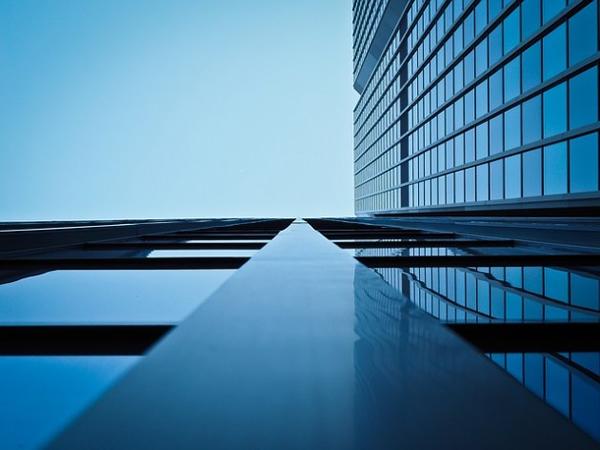
The construction of skyscrapers is a huge industry. The number of skyscrapers being built is rising year on year, and this growth is expected to continue as cities look to become more modern and eye-catching with impressive skylines that attract tourists and businesses alike.
The sums involved in constructing skyscrapers increase each year too—The Salesforce Tower in San Francisco is set to become the city’s most expensive building when its construction is complete, costing over $1.1 billion.
The explosive growth of the skyscraper industry coincides with remarkable progress in technology over the last two decades. With ever more advanced “smart” technologies being discovered each year, there is an opportunity for skyscrapers to use such technologies to become smart skyscrapers.
The following article looks at how architects, designers, and businesses can incorporate technology into the construction and design of modern skyscrapers.
Switchable smart glass is a modern technology that uses electrochromic glass to create intelligent partitions, windows, and skylights that allow users to alter the properties of the glass at the flick of a switch.
Switchable glass can be used inside skyscrapers and other buildings in the form of switchable glass panels or floors, and on the building’s façade in the form of switchable glass windows.
Smart glass has an important application on the exterior of a building, where it can be used as a projector for promotional purposes in high end skyscrapers.
A special film can be applied to the switchable glass panels, which can turn them from transparent glass, into a fully projected screen. Businesses that operate from skyscrapers can use such technology to display far-reaching advertisements during the night time that get noticed by everyone who can see the building’s façade.
Additionally, using switchable glass windows allows for energy savings. Solar smart glass is a type of solar control glass that offers users the option of controlling the amount of light and heat that pass through the glass surface at the flick of a switch.
Switchable glass windows that use such technology can be incorporated into the design of skyscrapers to reduce energy costs. During warmer months, the glass panels can be altered to reduce the amount of light, and therefore heat, allowed in, which reduces the need for air conditioning.
During colder months’ companies that inhabit large buildings such as skyscrapers can control the glass to maximize the daylight entering the building, which can reduce heating costs.
In terms of interior uses, switchable glass technology offers unparalleled privacy. Owners of hotels, private accommodations, and commercial enterprises choose glass buildings partly for the views that they offer of the surrounding city and landscapes.
But the need for privacy often necessitates the installation of bulky curtains and blinds. Such a problem doesn’t exist when buildings are designed using switchable smart glass. Inhabitants of the building can get the privacy they need when they need it by simply changing the windows to opaque.
Furthermore, switchable glass can be used in hotel and private accommodation bathrooms to provide both on-demand privacy and an attractive interior design in the same space.
Smart Design & Construction
Building skyscrapers with high-strength steel can help designers and architects optimize structural concrete reinforcement designs and minimize the total volume of steel reinforcement rebar in foundations, shear walls, slabs and other structural elements.
One of the main draws of reducing the steel reinforcement required for skyscrapers is huge savings directly in terms of sourcing the material and indirectly in terms of the negated labour costs and the time saved in constructing the structure. High-strength steel for the purposes of constructing skyscrapers is steel classified as 690 MPa (100 kilopounds per square inch) or higher.
Prefabrication offers a lot in terms of improving the speed at which skyscrapers can be constructed. Broad Sustainable Building, a Chinese construction firm, built a 57-storey skyscraper in just 19 working days using a modular method that enabled them to assemble three floors per day. Incorporating such a technique can help to drastically speed up the construction of skyscrapers, which is potentially beneficial considering the time constraints of many skyscraper projects.
IoT Sensors
Internet of Things, or IoT, is a concept relying on the interconnectedness of everyday objects to the Internet, used for the purposes of gathering and transmitting data. The designers and occupants of smart skyscrapers are beginning to use the concept of IoT to improve the functionality of these buildings.
An artificial intelligence company named Verdigris recently introduced Einstein, an IoT energy management platform that uses smart sensors and meters to reduce energy use, optimize controls, and predict future breakdowns in complex facilities.
The platform can provide a continuous stream of energy data from a building, from equipment such as air conditioning units and lights, to help deliver a smarter and more responsive building operation.
Using a system such as Einstein can potentially save millions of dollars each year on energy costs in skyscrapers because of the level of control and intelligence such systems offer.
Companies building skyscrapers have more choice than ever in terms of how they design skyscrapers, and this includes the plethora of available technologies that have arrived within the last ten years in particular.
By leveraging advanced smart technologies such as switchable smart glass and IoT sensors, and using smart design methods and materials like prefabrication and high-strength steel, designers can transform modern high-rise buildings into smart skyscrapers built for the future.

